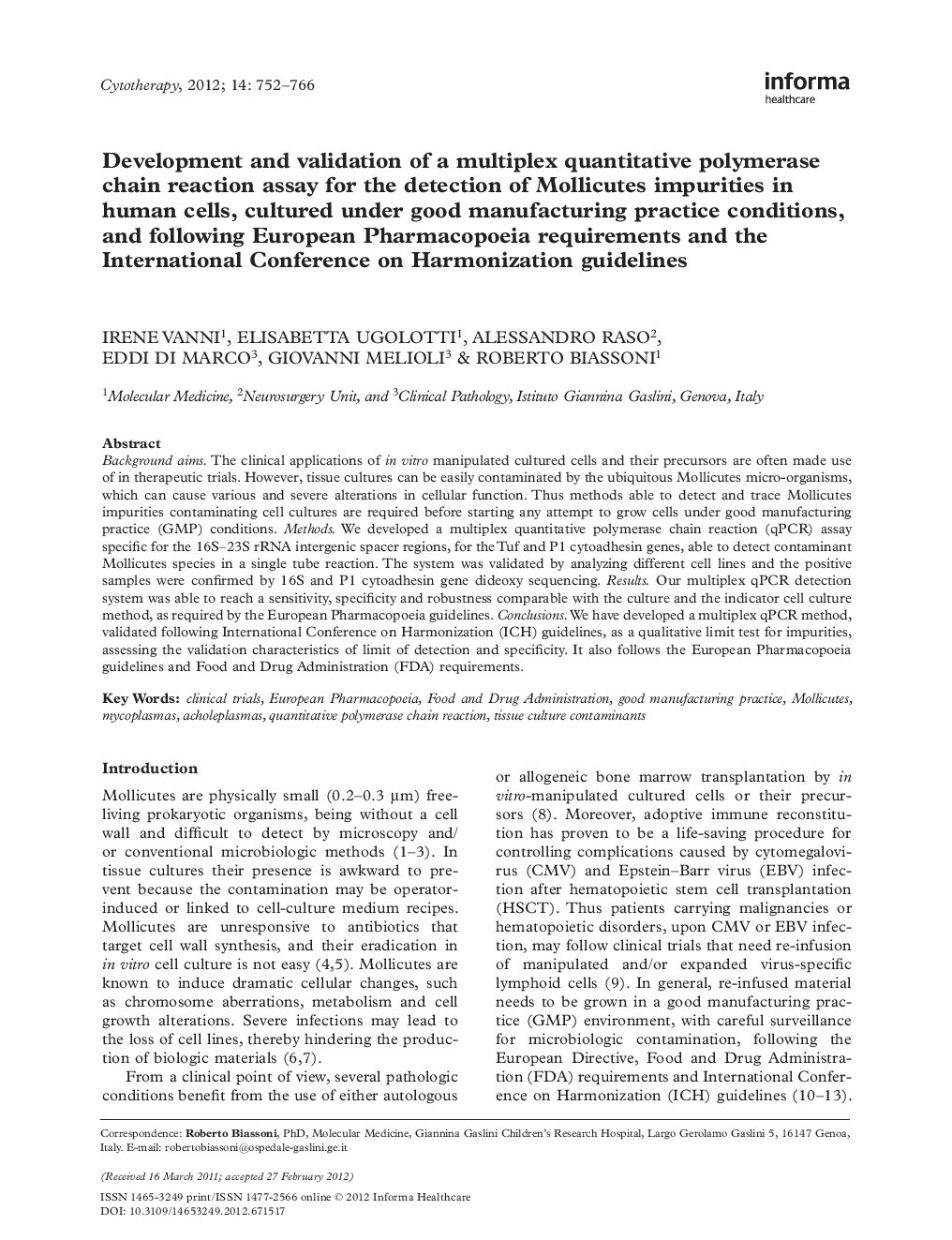| Article ID | Journal | Published Year | Pages | File Type |
|---|---|---|---|---|
| 2171600 | Cytotherapy | 2012 | 15 Pages |
Background aimsThe clinical applications of in vitro manipulated cultured cells and their precursors are often made use of in therapeutic trials. However, tissue cultures can be easily contaminated by the ubiquitous Mollicutes micro-organisms, which can cause various and severe alterations in cellular function. Thus methods able to detect and trace Mollicutes impurities contaminating cell cultures are required before starting any attempt to grow cells under good manufacturing practice (GMP) conditions.MethodsWe developed a multiplex quantitative polymerase chain reaction (qPCR) assay specific for the 16S–23S rRNA intergenic spacer regions, for the Tuf and P1 cytoadhesin genes, able to detect contaminant Mollicutes species in a single tube reaction. The system was validated by analyzing different cell lines and the positive samples were confirmed by 16S and P1 cytoadhesin gene dideoxy sequencing.ResultsOur multiplex qPCR detection system was able to reach a sensitivity, specificity and robustness comparable with the culture and the indicator cell culture method, as required by the European Pharmacopoeia guidelines.ConclusionsWe have developed a multiplex qPCR method, validated following International Conference on Harmonization (ICH) guidelines, as a qualitative limit test for impurities, assessing the validation characteristics of limit of detection and specificity. It also follows the European Pharmacopoeia guidelines and Food and Drug Administration (FDA) requirements.
